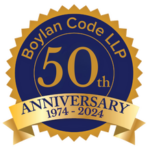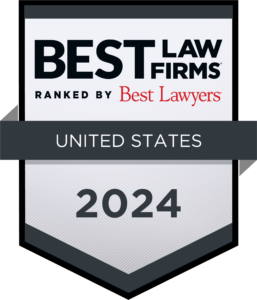“I’VE GOT MORE DEBT THAN I CAN HANDLE AND I NEED HELP”
Options: Bankruptcy: Chapter 7 or Chapter 13
Settlement: Time Payment (CCCS) / Debt Settlement in lump sum
Do Nothing: You may not be subject to enforcement process
Bankruptcy: “Petition” Federal Court for “Relief” under the Bankruptcy Code to get a
“Discharge” of personal liability for debts
Process: “Schedules” – File written lists of Debts, Assets, Budget and Financial history “Automatic Stay” Automatic “time out” with all creditors immediately upon filing
“Trustee” – Meet with creditor representative (20 – 40 days)
“Discharge” – Eliminates debtor’s personal liability for debts
Chapter 7: 60 days after Trustee meeting if no objections;
Chapter 13: Upon completion of “Plan” with monthly payments 3 – 5 years
“Administration”
Chapter 7: Non-“exempt” assets (if any) liquidated and distributed.
Trustee reviews schedules. Agreed amount is paid or asset sold.
Chapter 13: Monthly Plan payments paid to creditors through Trustee over 3-5 years
General creditors must receive as much as in Chapter 7.
“Exempt” assets – Some assets are not subject to the claims of creditors (+Others) (Each debtor)
NY Federal
Homestead $75,000 $22,975
Auto – $ 4,000 $ 3,675
Jewelry $ 1,000 $ 1,550
Furniture etc. $10,000 $12,250 (no item >$575)
Tools of trade $ 3,000 $ 2,300
Wildcard $ -00- $ 1,225 + unused Homestead up to $12,725 total
Life Ins cash value Reasonably necessary $12,250
IRA/401k Reasonably necessary Reasonably necessary
Why Chapter 13?
Stop foreclosures and pay mortgage arrears over 5 years
Non-exempt assets – pay value over 5 years vs. short period with Chapter 7 trustee
High income debtors – income exceeds reasonable living expenses
“Cram down” – pay secured creditor value of collateral instead of loan balance (not <2.5 yrs.)
“Lien stripping” – remove second mortgage where there is no equity beneath it (“Pond”)
Debt Settlement
CCCS installments over 5 years with reduced interest
Lump Sum % settlement – Usually only if Bankruptcy is a worse alternative
Accounts delinquent – calls, letters, and lawsuits continue until “ripe” for settlement
Settlement amount, time and fees vary
Cancellation of indebtedness income – Taxable Income (1099C)
Don’t use home equity or retirement funds!
Do Nothing – some people are not collectible – “Judgment Proof”
Calls, Letters, Law Suits
Retirees, disabled, low/no income etc.
Bank Accounts: Threshold amounts for restraint/seizure $1,740 / $2,625 (Exemptions*)
Wage garnishee: 10% Gross wages (must earn >$217.40/week).
Social Security, pension, disability, child support, Workers’ Comp. etc. are exempt*
Judgment lien on debtor’s interest in real estate 10 years+.
H & W “Tenancy by the Entireties” – Survivor receives title free of spouse’s judgments
Judgment enforceable 20 years
FAQ’s
Do I have to list all of my debts in a bankruptcy? I intend to pay some of them. Yes, all debts must be listed.
Can I keep my car if I am making payments? Yes, in both Chapters 7 or 13. Also, in Chapter 7, the creditor often requests a “Reaffirmation” of a car loan to exclude it from discharge. In Chapter 13, the loan is typically paid in full through the Chapter 13 Plan but often at a lower interest rate.
Can I keep my house? Yes, however, Chapter 7 does not help in foreclosure where Chapter 13 is the better choice. Some banks require mortgage reaffirmation for refinance or modification, though not commonly done.
Is Chapter 13 better for credit? It’s worse. Though a Chapter 7 stays on credit for 10 years and Chapter 13 only 7 years, both times start from the discharge date which takes 3-5 years in Chapter 13.
Is debt settlement better for my credit? It’s better than debt but “Settled for less than full payment” is still bad.
Do they come to the house? No, though technically possible. Bankruptcy is based on full, honest, disclosure. Your schedules will be so complete no one would think otherwise. Anything less can land you in jail!
Must attorney’s fees be paid in advance? In Chapter 7, yes, because the unpaid fees are discharged along with other debts. An attorney’s attempt to collect after discharge is a violation of Federal law. In Chapter 13, the balance of unpaid fees are commonly paid under the Chapter 13 Plan. Usually a portion is paid up front.
Can’t I just transfer all of my assets to someone else and then file bankruptcy? No, assets transferred, without fair payment in return, are subject to recovery by the trustee as a “fraudulent conveyance”. The trustee has a 6 year look-back – including divorce settlements! Transfers within 1 year can risk the loss of your discharge.
Can I pay some creditors? General* creditors may be forced to return “preferential payments” received prior to the bankruptcy filing to be shared amongst all creditors. The trustee will look-back 90 days, generally, and one year for payments to family members. Anyone can be paid after bankruptcy. *(not mortgage or auto payments)
How long does it take to file a bankruptcy? My record is 29 minutes – to stop a foreclosure. Generally, the time depends on the clients’ readiness to file or strategic issues – waiting out a preference, spending down assets, etc.
Are some debts not dischargeable? Yes. Support, student loans, income taxes within 3 years, DWI damages, fines and others. Individual creditors can also seek an exception to discharge for fraud or on other grounds.
How much will my Chapter 13 payment be? It depends on what you are trying to accomplish in Chapter 13.
Ex: Value of Non-exempt property (+ interest) + unpaid attorney’s fee + mortgage arrears /divided by/ 60months; or, your monthly budget surplus – whichever is higher. It is a complex analysis.
What is the “Means Test”? Household expense analysis based on IRS standards used to force a Chapter 7 debtor into Chapter 13 where 6 month household income is above the statewide “median” for the family size.


